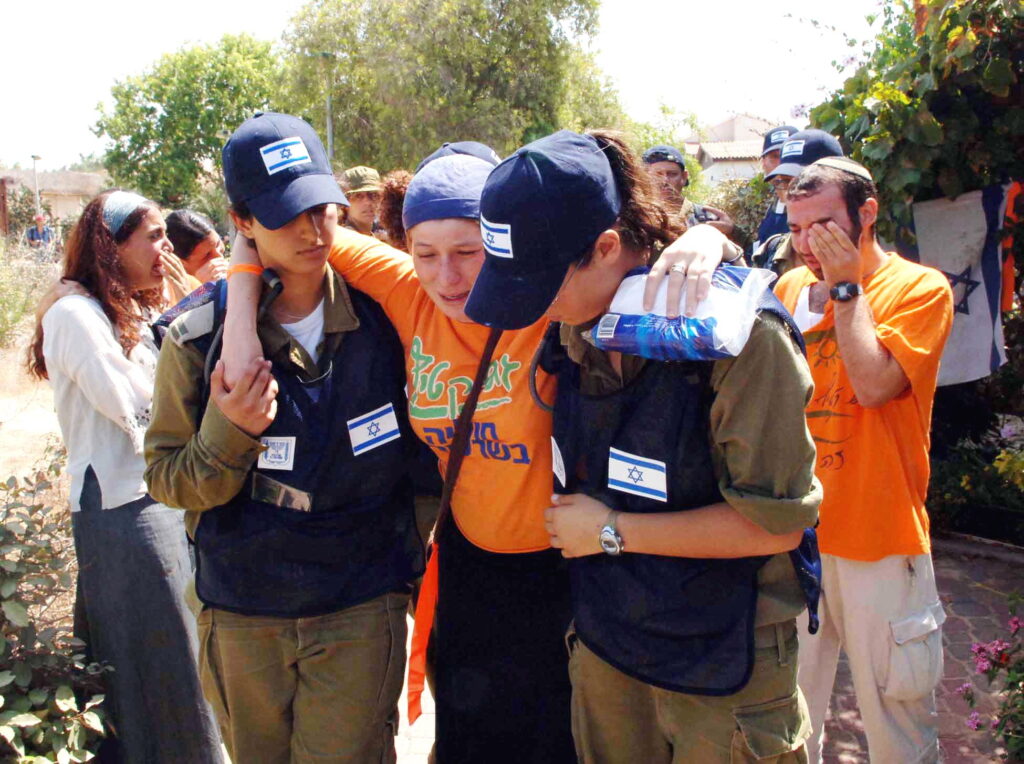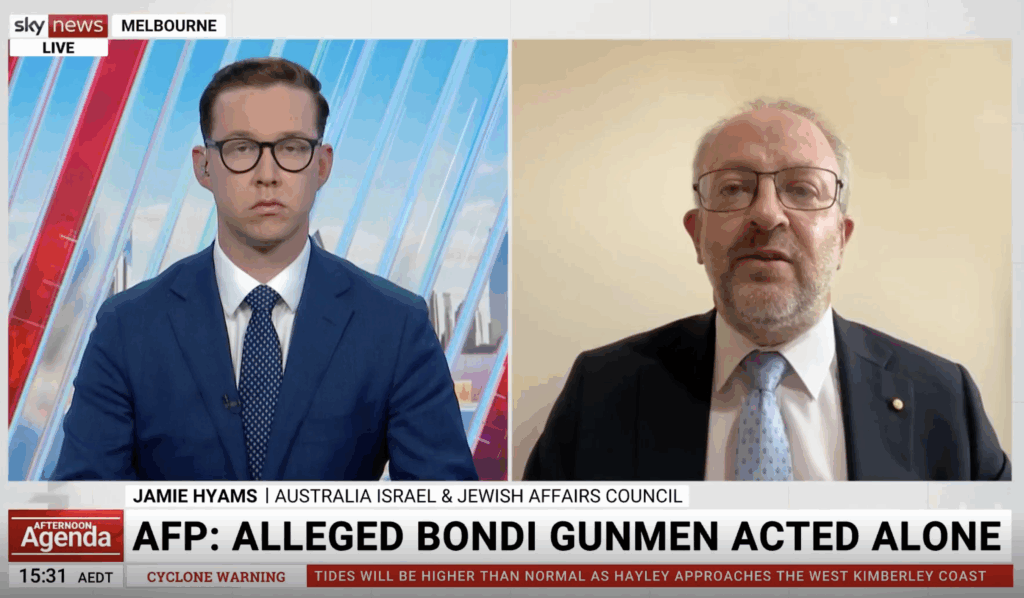IN THE MEDIA
Twenty years after Disengagement
August 14, 2025 | Bren Carlill

Australian Jewish News – 14 August 2025
Disengagement was a failure, but that doesn’t mean it was the wrong thing to do.
Twenty years after Israel’s unilateral withdrawal from Gaza, the move still creates disagreement.
People use the sometimes contradictory outcomes of Disengagement to back their arguments.
Some say disengagement proved that Israel could take on the settlers; and allowed it to remove over a million Palestinians from its direct or indirect control, thereby reducing the threat of the ‘demographic timebomb’. They argue it made things better, by removing Israeli soldiers from being killed in an occupation not vital to Israel’s existence.
Others argue that it made things worse, that it created the conditions for Hamas to take over, ultimately leading to the October 7 attacks, and everything after.
Some argue that Hamas’ takeover showed the world that Israel couldn’t safely withdraw from the West Bank, and so on.
Hindsight allows us to judge Disengagement from the perspective of two decades of events: the Hamas takeover; the tens of thousands of rockets; the wars in 2006, 2008-09, 2012, 2014, 2019, 2021 and, of course, the horrors of October 7 and the war it sparked.
However, it’s also worth considering the 20 years leading up to Disengagement: the intifada from 1987; the peace talks of 1991; the Oslo process (and concurrent rise in terrorism) from 1993; the increasing prominence of Hamas; the failed Camp David talks of 2000; the onslaught of suicide bombs in the second intifada; and the 2003 Roadmap.
The motivation for Disengagement was for Israelis to separate themselves from Palestinians.
In the Israeli collective consciousness, from 1967 to 1987, Israelis had been benevolent occupiers. They’d dramatically improved infrastructure in the territories (many Palestinians received electricity and water for the first time) and improved Palestinian quality of life. But the intifada, which began in December 1987, was the Palestinians collectively demanding the end to the Israeli occupation.
The 1990s was when Israelis tried to sort out a shared future with the Palestinians through negotiations. Israelis were divided between those willing to give up the territories and those who weren’t. But, either way, the peace process blew up in their face – not only with the flat-out rejection of peace at Camp David in July 2000, but the second intifada from September that year.
This tipped most Israelis over the edge. If occupation hadn’t worked, and if negotiations hadn’t worked, Israel would separate itself from the Palestinians as much as it could. Not to advance the ‘two-state solution’, but for purely pragmatic reasons – to save Israeli lives. This is the context of the security fence in the West Bank, which, from 2003, physically prevented suicide bombers – and, in the case where it’s a wall, bullets – from entering Israel.
And so it was with Disengagement. Let’s recall that between the outbreak of the second intifada and Disengagement, 39 Israeli civilians were killed in Gaza, along with 87 soldiers.
But let’s also recall the deep commitment to hold onto Gaza, held by large parts of Israeli society.
August 2005 was searing for all Israelis.
And, in the end, Disengagement didn’t work. The rockets increased. The first war with Hamas was less than a year later, when its fighters invaded Israel, capturing Gilad Shalit.
Hamas took over the entire Strip a year after that.
Hamas has never been shy about its real intent and, by 2007, Israelis knew that the withdrawal had not achieved the separation they’d hoped for. Palestinian jihadis do not want to be separate from Israel.
A pattern emerged of a short war every few years.
So, was Disengagement a good idea or a bad one? The answer remains subjective.
Living in Israel at the time, I was a supporter of it, though my views are more nuanced now. In my opinion, Disengagement added to the lesson Palestinians had been learning for several decades: that violence works.
A key Palestinian perspective is that the violence of the first intifada brought about the Oslo agreements. (But diplomacy didn’t bring about a state).
Similarly, Palestinians perceive the violence of Hezbollah as forcing Israel out of Lebanon in 2000. And the violence of the second intifada as causing Disengagement.
But Palestinians learned the wrong lesson.
Gaza and Lebanon are on Israel’s periphery. It could withdraw for pragmatic reasons.
The West Bank, on the other hand, is adjacent to Israel’s industrial, commercial and demographic heartland. Even those many Israelis who would like to one day withdraw from the West Bank know that Israel can’t until Palestinians have finally accepted Israel’s permanence.
This is why violence has not brought Palestinians any strategic successes since Disengagement. It remains to be seen what lessons the Palestinians will learn from the consequences of the violence of October 7.
From Israel’s perspective, October 7 and the current war are the most obvious symbols of the failure of Disengagement.
It is a tragedy that, 20 years after the withdrawal, Israel is back in Gaza, waste deep in its murderous quicksand, again pondering the pros and cons of withdrawing.
Dr Bren Carlill is the director of special projects at the Australia/Israel & Jewish Affairs Council
Tags: Gaza, Hamas, Israel, Palestinians





